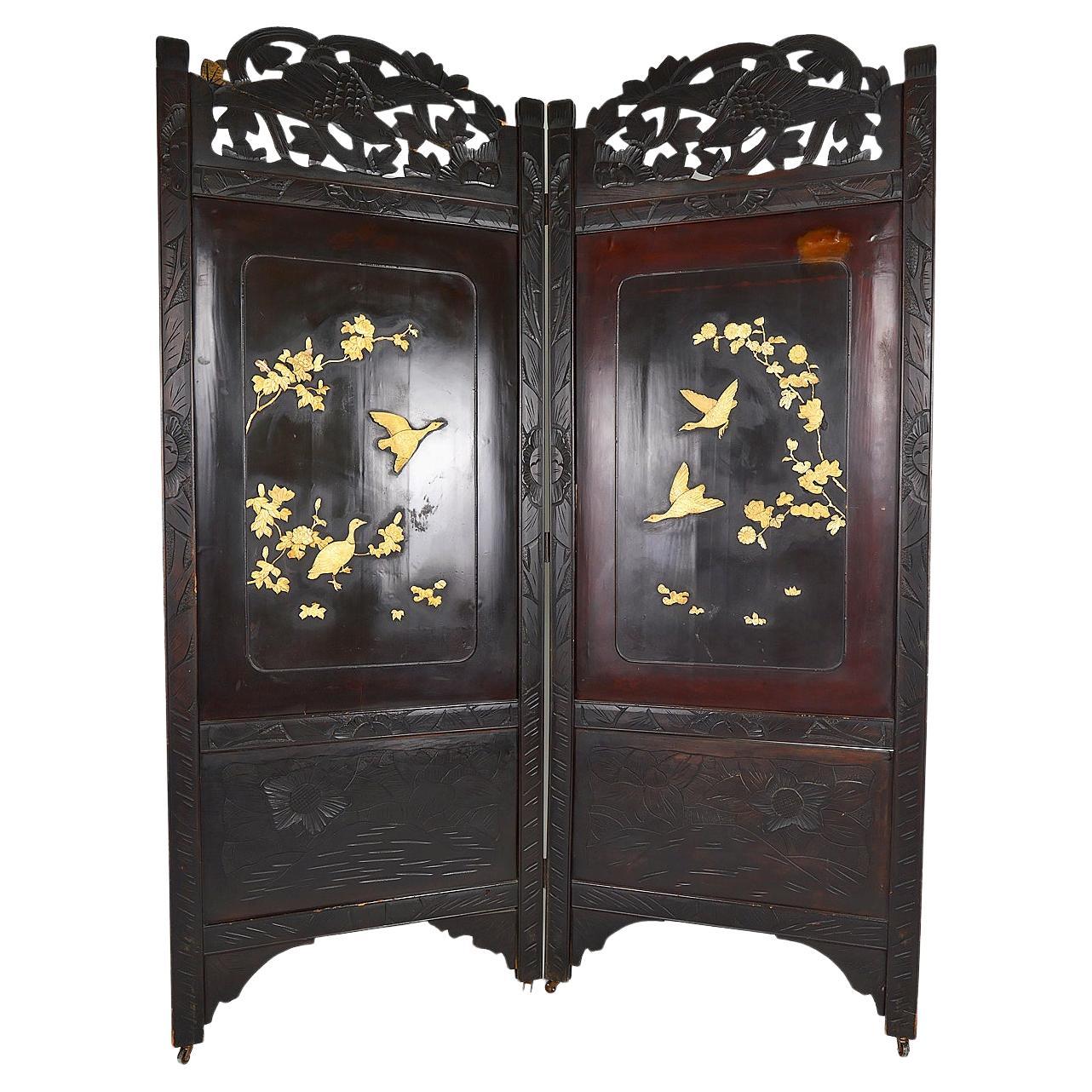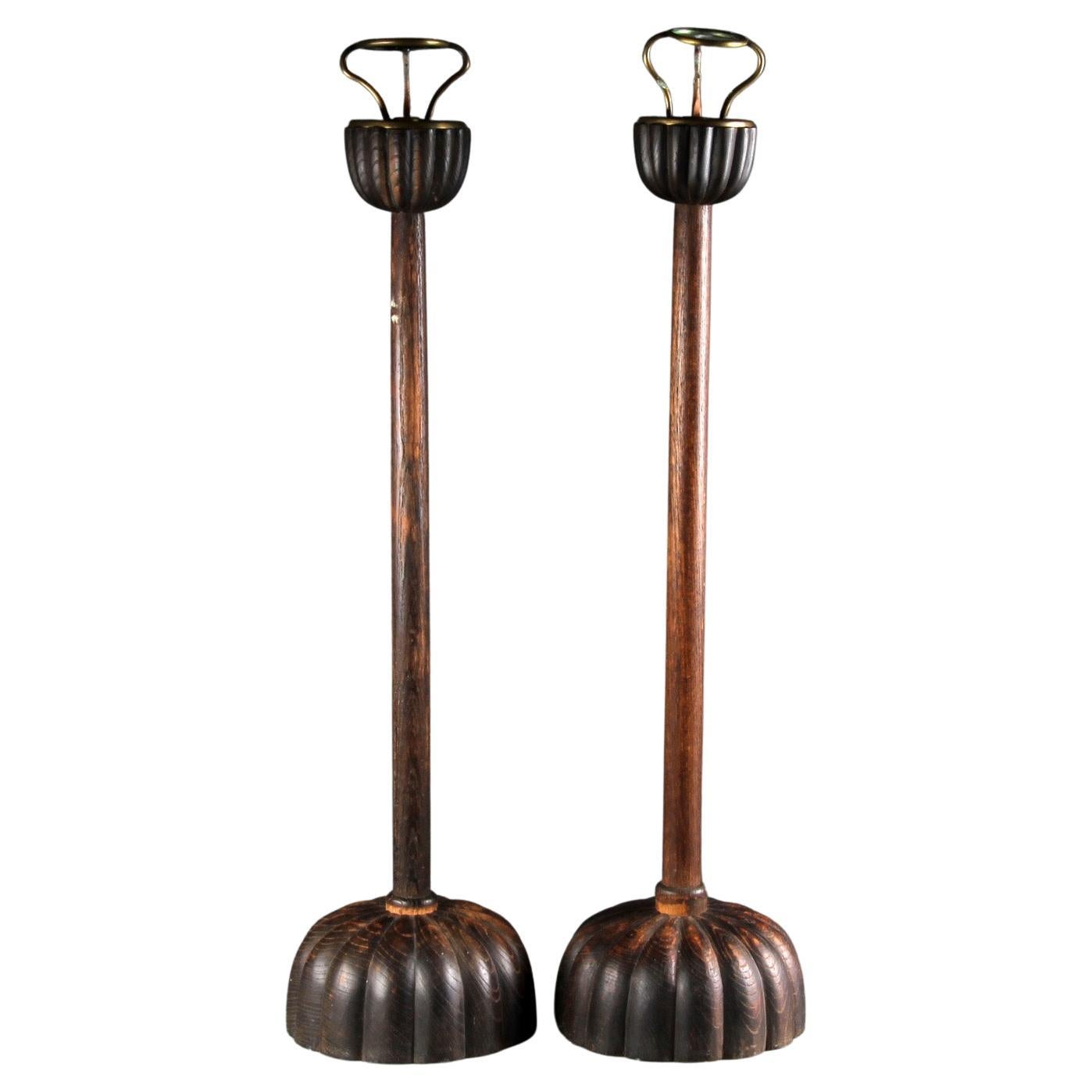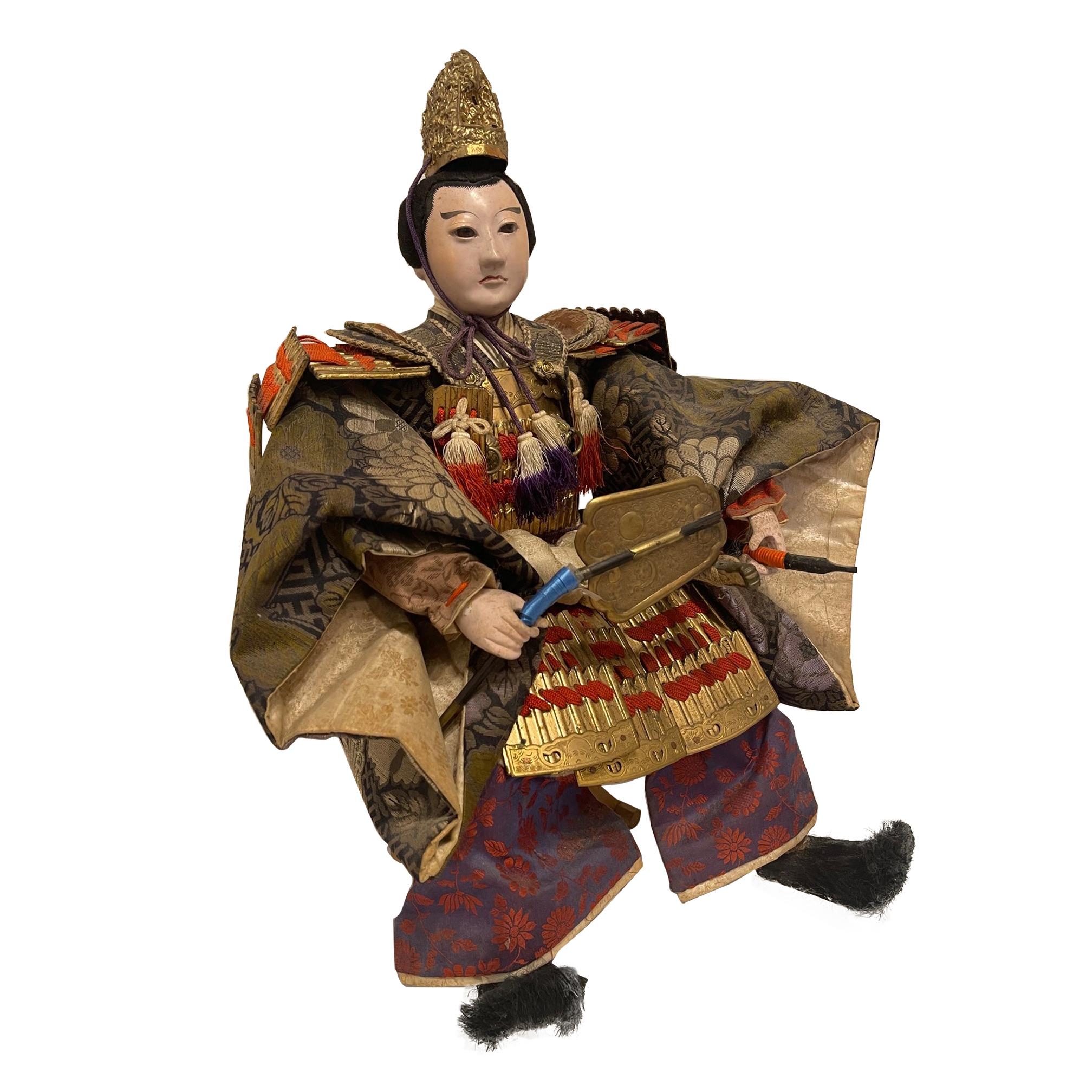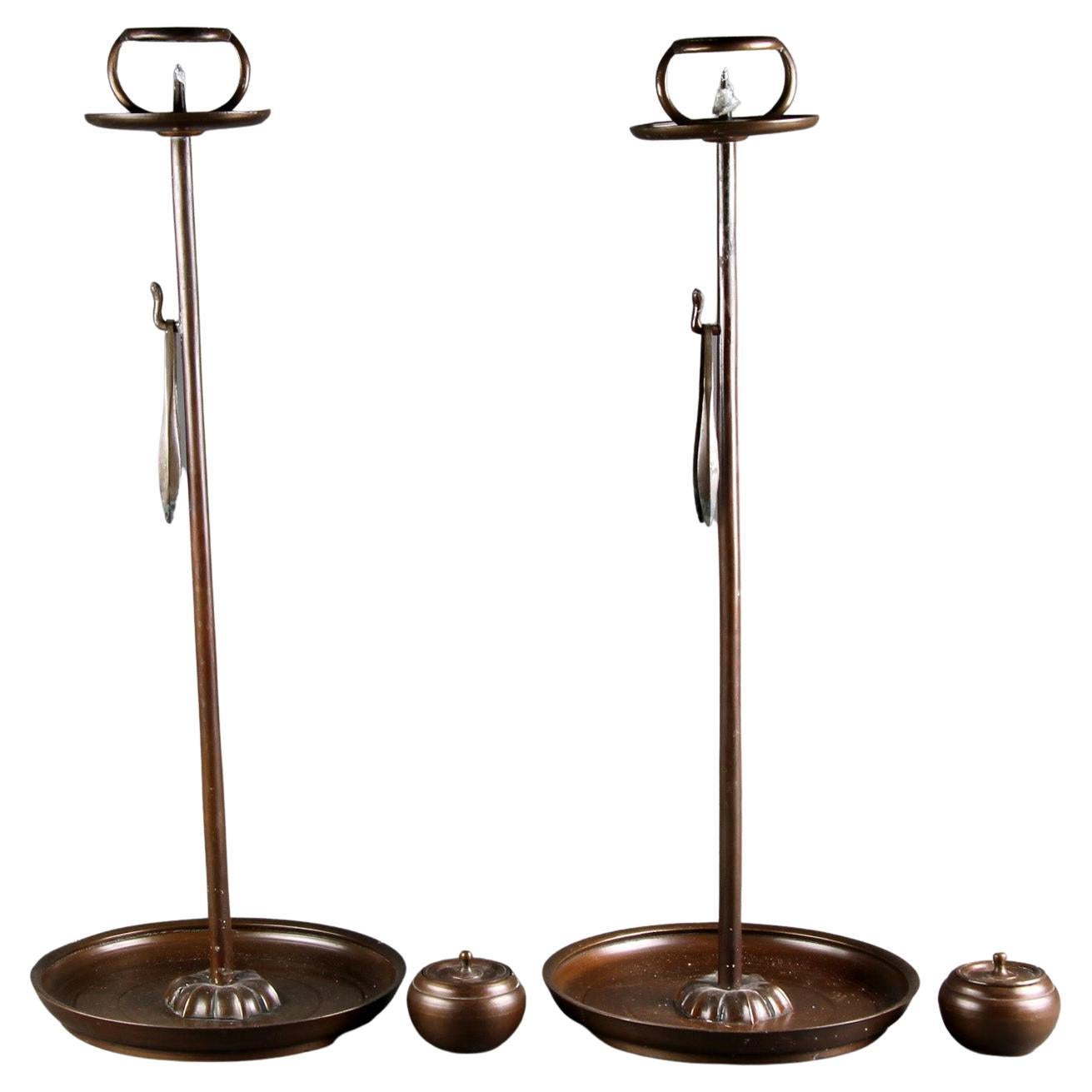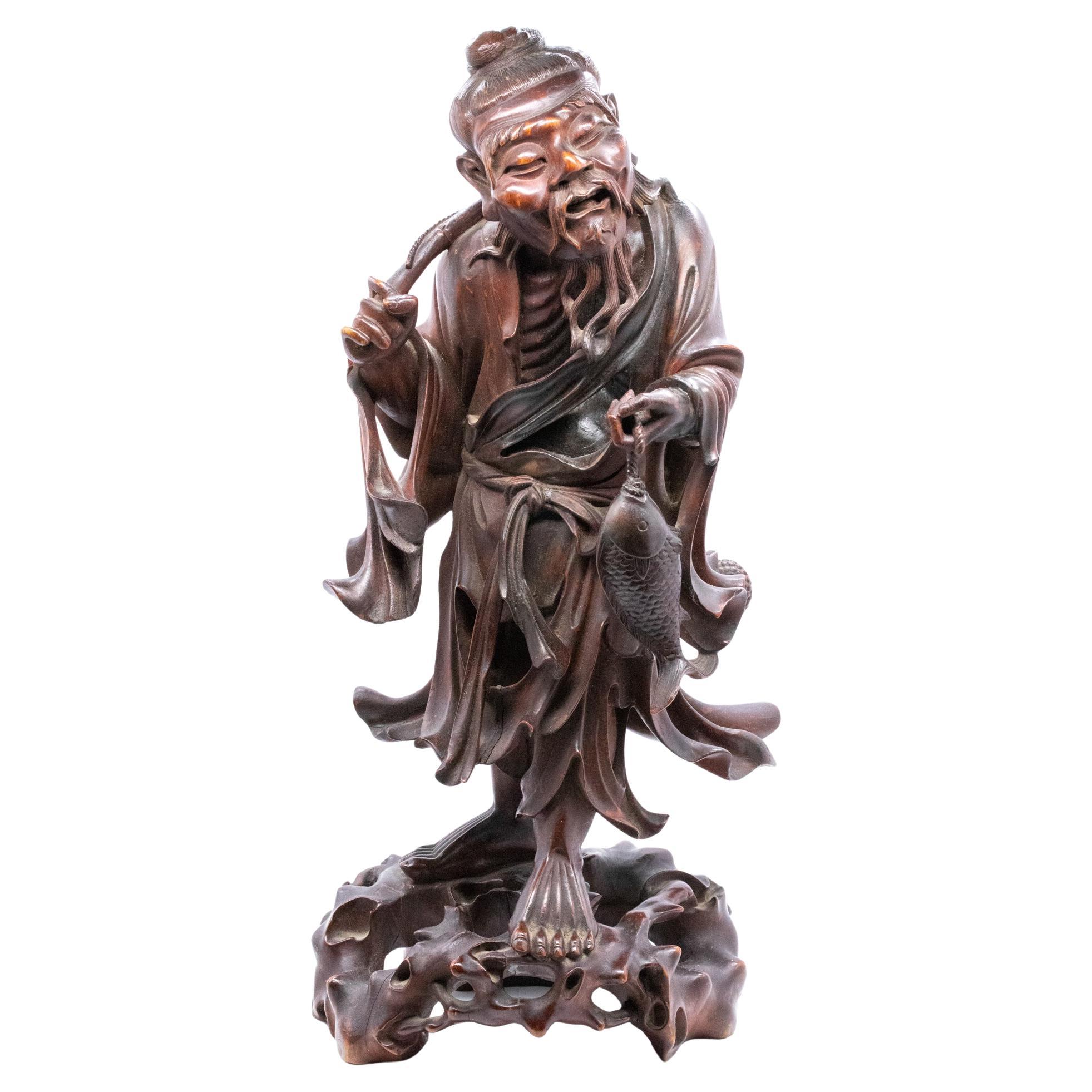Items Similar to Japan 1890 Meiji Shibayama Round Urn in Gilded Wood and Sterling Silver
Want more images or videos?
Request additional images or videos from the seller
1 of 11
Japan 1890 Meiji Shibayama Round Urn in Gilded Wood and Sterling Silver
About the Item
Shibayama urm from the Japan meiji (1858-1912) period.
Gorgeous piece of art, created in the imperial Japan during the Meiji period, circa 1890. This is a little urn with a lid crafted in gilded wood, shibayama panels and sterling silver. Composed by a four footed round vase with two sterling silver handles in the shape of trees and the lid on top accented with the figure of a crab in sterling silver. The gilded wood is decorated with flowers, sea patterns and the imperial flower of chrysanthemums.
The Crab
Legend held that the crabs were the reincarnations of samurai slain at the Battle of Dan-no-ura in 1185 AD, a war over the Japanese imperial throne. These are said to be the spirits of the departed Tairas. Not surprising as they have a lot to scowl about. They lost absolutely everything including the sacred imperial sword.
Gemstones: Decorated with two panels mounted with intricate scenes in the shibayama technique with carvings of jade, carnelian, agate and nacre of different colors.
Weight: 113.95 Grams, (73.04 Dwt).
Measurements: 130.8 mm by 83 mm by 108 mm (5.15 x 3.27 x 4.25 Inches).
Hallmarks: Signed in the bottom with the maker's cartouche inside a circle.
Shibayama
The art form known as shibayama is named after the Shibayama area of present-day Chiba prefecture. The shibayama technique was created by Onoki Senzo, an Edo haberdasher who lived during the An’ei era (1772–1781). His style of inlaying became so popular that he named works done with the inlay technique after his hometown of Shibayama and later also adopted this name as his surname. Shibayama refers to the intricate carving and minute encrustation of various materials on to a ground material. The inlay typically consists of mother-of-pearl, ivory, tortoiseshell and coral, the combination creating a delightful contrast of colours and textures.
Meiji period
Is an era of Japanese history that extended from October 23, 1868 to July 30, 1912.The Meiji era was the first half of the Empire of Japan, when the Japanese people moved from being an isolated feudal society at risk of colonization by Western powers to the new paradigm of a modern, industrialized nation state and emergent great power, influenced by Western scientific, technological, philosophical, political, legal, and aesthetic ideas. As a result of such wholesale adoption of radically different ideas, the changes to Japan were profound, and affected its social structure, internal politics, economy, military, and foreign relations. The period corresponded to the reign of Emperor Meiji. It was preceded by the Keio era and was succeeded by the Taisho era, upon the accession of Emperor Taisho.
Provenance: The Flying Cranes gallery, New York NY. Objets D'art Gallery, Kensington, MD.
Condition: The overall condition of this urn is perfect. Beside the little normal wear, there is no damage to any parts. All gemstones are secured in the settings. This piece has been carefully inspected to guarantee the condition and authenticity.
INVENTORY REF: D031223ASNM/.1121.
- Dimensions:Height: 4.25 in (10.8 cm)Width: 5.15 in (13.09 cm)Depth: 3.27 in (8.31 cm)
- Sold As:Set of 2
- Style:Meiji (Of the Period)
- Materials and Techniques:
- Place of Origin:
- Period:
- Date of Manufacture:1890
- Condition:Wear consistent with age and use. The overall condition of this urn is perfect. Beside the little normal wear, there is no damage to any parts. All gemstones are secured in the settings. This piece has been carefully inspected to guarantee the condition and authenticity.
- Seller Location:Miami, FL
- Reference Number:
About the Seller
5.0
Platinum Seller
These expertly vetted sellers are 1stDibs' most experienced sellers and are rated highest by our customers.
1stDibs seller since 2023
63 sales on 1stDibs
Typical response time: <1 hour
- ShippingRetrieving quote...Ships From: Miami, FL
- Return PolicyA return for this item may be initiated within 1 day of delivery.
More From This SellerView All
- Japan 1890 Meiji Period Ebisu Sculpture in Wood Carving of an Old FishermanLocated in Miami, FLAn extremely well detailed wood carving of Ebisu, as a fisherman. Beautiful and well detailed sculpture, created in Japan during the Meiji dynastic period (1868-1912) back in the 1890's. This piece represent the god of good fortune Ebisu. Was exceptionally carved and executed from one solid single piece of rose wood, showing a gorgeous face expression, with intricate details in the hands and feets, he's carrying as usual a rod and a fish. Ebisu (yebisu), ???, god of fortune, the ocean and fisherman. In the japanese mythology is one of the seven gods of luck, sichi-fuku-jin, the patron of the fisherman and tradesmen. he is depicted as a bearded, smiling fisherman with formal long court ropes, often carrying a rod in one hand and a tai, symbolic fish of the good luck, in the other. The height is 14.25 inches (36.20 cm) and the base measurements is 6.5 by 6.45 inches (16.5 x 16.38 cm). Meiji period, is an era of Japanese history that extended from October 23, 1868 to July 30, 1912.The Meiji era was the first half of the Empire of Japan, when the Japanese people moved from being an isolated feudal society at risk of colonization by Western powers to the new paradigm of a modern, industrialized nation state and emergent great power, influenced by Western scientific, technological, philosophical, political, legal, and aesthetic ideas. As a result of such wholesale adoption of radically different ideas, the changes to Japan were profound, and affected its social structure, internal politics, economy, military, and foreign...Category
Antique 1890s Japanese Meiji Sculptures and Carvings
MaterialsWood
- Japan 1890 Meiji Period Signed Assembling of Okimono with a Group of SkeletonsLocated in Miami, FLA signed Okimono from the Japanese Meiji period (1868-1912). Very rare, unusual and large sculptural assembling of a dysplaying piece of okimono. Created in Japan during the imperial period of the Meiji (1868-1912). This extraordinary piece okimono sculpture depict a group of four intricately and realistically rendered carousing males skeletons representations (Gaikotsu) standing in several position. One skeleton is crouched down playing with mouses in the floor. The second is seated resting in the other's back, peacefully smoking opium. The others two are fully standing in interacting position. The entire composition is arranged freely displayed on the wood base including a woven basket, apparently with food and four playfull mouses. There are an extra five mouses in different positions, freely playing around, all of them with the eyes accented with carved black ebony. The composition is displayed on a four-legged free form carved wood platform with an inlaid red plaque engraved with the artist's signature. The level of detail and the quality of the carving is truly exceptional. Has an exact measurements of 216.15 mm by 139.7 mm by 359.41 mm (8.51 x 5.5 x 14.15 Inches). After an extensive collection of data, comparables and references to this piece, we have only been able to find only three okimono sculptures like this, with similar themes and the same quality of work. References Note: A similar carving of four skeletons playing an animated game of dominos, signed Shutaro in an inlaid rectangular red plaque, was sold in London by Christie’s South Kensington in October 14 2014, Lot 120 Sale 5546. References Note: A similar carving with four skeletons in an otherwise typical victorian scene of a photographer and three sitters signed Shutaro in an inlaid rectangular red plaque, was sold in Edinburgh at Lyon & Turnbull in November 7, 2018. References Note: A similar carving with five skeletons seated, playing cards and drinking, was sold in London by John Nicholson Fine Art on September 26, 2018. Meiji period, is an era of Japanese history that extended from October 23, 1868 to July 30, 1912.The Meiji era was the first half of the Empire of Japan, when the Japanese people moved from being an isolated feudal society at risk of colonization by Western powers to the new paradigm of a modern, industrialized nation state and emergent great power, influenced by Western scientific, technological, philosophical, political, legal, and aesthetic ideas. As a result of such wholesale adoption of radically different ideas, the changes to Japan were profound, and affected its social structure, internal politics, economy, military, and foreign relations. The period corresponded to the reign of Emperor Meiji. It was preceded by the Keio era and was succeeded by the Taisho era, upon the accession of Emperor Taisho. Okimono, is a Japanese term meaning for display an ornament; art object; or decorative object, usually displayed in a tokonoma or butsudan "Buddhist altar". It is an ornament or figure, especially one placed in a guest room. An okimono may be a small Japanese carving...Category
Antique 1890s Japanese Meiji Sculptures and Carvings
MaterialsWood
- Japan 1900 Meiji Miniature Hanagamidai Cabinet in Gilded Wood & Sterling SilverLocated in Miami, FLMiniature hanagamidai cabinet from the Japan meiji (1858-1912) period. Gorgeous and rare miniature drawers hanagamidai (cosmetic cabinet), created in the imperial Japan during the...Category
Antique Early 1900s Japanese Meiji Lacquer
MaterialsGold, Silver, Sterling Silver
- Japan 1890 Meiji Period Decorative Vase In Cloisonné Enamel With Wood BaseLocated in Miami, FLJapanese vase from the Meiji Period (1868-1912). Beautiful antique decorative vase, created in Japan during the Meiji period (1868-1912), circa 1890s. It was carefully crafted in so...Category
Antique 1890s Japanese Meiji Metalwork
MaterialsBronze, Enamel
- Japan Meiji 1900 Three Bronze Ducks Sculpture in Wood Stand and CoralLocated in Miami, FLSculptural composition of the ducks from the Japanese Meiji Period. Beautiful and very well realized sculptural composition of three ducks, made during the japanese imperial perio...Category
Antique Early 1900s Japanese Meiji Sculptures and Carvings
MaterialsCoral, Bronze
- Japan 1890 Meiji Period Bronze Koro Censer in Cloisonne Enamel with Jade LidLocated in Miami, FLJapanese Koro from the Meiji Period (1868-1912). Beautiful antique ten sides fluted koro censer, created in Japan during the Meiji period (1868-1912), ci...Category
Antique 1890s Japanese Meiji Metalwork
MaterialsJade, Gold, Silver, Bronze, Enamel
You May Also Like
- Carved and Inlaid Shibayama Folding Screen, Japan, Meiji Era, circa 1890Located in VÉZELAY, FRFolding creen with 2 panels in carved, inlaid and lacquered wood. The upper and lower parts are carved with birds and foliage / leaves. The central panels are inlaid on the front...Category
Antique 1890s Japanese Meiji Screens and Room Dividers
MaterialsWood
- Shokudai Candle Holders of Wood from Japan, Meiji 1868-1912Located in London, GBPair of Shokudai candle holders made of stained wood during the Meiji period (1868-1912) in Japan. Includes original box as pictured. Candle holders H. 71 cm. Wooden box H. 25 ...Category
Antique Late 19th Century Japanese Meiji Antiquities
MaterialsSoftwood
- Japanese Samurai Doll or Figure, Meiji Period, Circa 1830Located in Savannah, GAJapanese Samurai Doll or Figure, Meiji Period, circa 1830. Skirt purple and red colors.Category
Antique Early 19th Century Japanese Meiji Antiquities
MaterialsPorcelain
- Shokudai Candle Holders of Bronze from Japan, Meiji 1868-1912Located in London, GBPair of Shokudai candle holders made of bronze during the Meiji period (1868-1912) in Japan. Includes original box as pictured. Candle holders H. 66cm; diameter 26cm. Lidded bro...Category
Antique Late 19th Century Japanese Meiji Antiquities
MaterialsBronze
- Bronze Model of a Heron Maiden Holding a Fish Basket Japanese, Meiji PeriodLocated in West Palm Beach, FLA bronze Model of a Heron Maiden holding a fish basket Japanese, Meiji Period late 19th century realistically rendered, all finely patinated, Signed Height 18.87 in. (46 cm.)Category
Antique 19th Century Antiquities
MaterialsBronze
- Japanese Meiji Noh Mask in Carved WoodLocated in New York, NYJapanese early Meiji period Noh theater mask made of carved wood with gofun layers. The piece was made in Japan in circa 1880 and is signed on the back. In great antique condition wi...Category
Antique 1880s Japanese Meiji Sculptures and Carvings
MaterialsWood
Recently Viewed
View AllMore Ways To Browse
Asian Influence Furniture
Wood Used In Japanese Furniture
Asian Influenced Art
Japanese Modern Wood Furniture
Japanese Round
Modern 1890
Wood Urn
Japanese Wood Sign
Japanese Wood Crafts
Gilded Wood Art
Gilded Round
Antique Wood Furniture Parts
1890 Japan
Wood Cartouche
Japanese Influence Furniture
Meiji Wood
Meiji Wood Furniture
Gilded Asian
